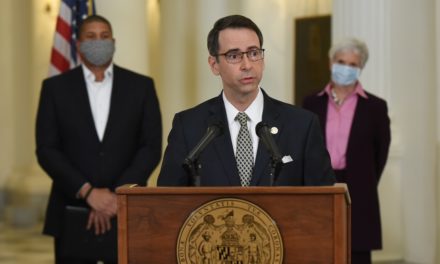By Barbara Pash
Barbara@MarylandReporter.com
Starting next year, jurisdictions in the state can choose to adopt an internationally accepted green building code for private and public construction.
“This will make it easier and cheaper to build green,” said Stuart Kaplow, president of the U.S. Green Building Council of Maryland. The General Assembly passed House Bill 972 this spring, making Maryland the first state in the nation to authorize the voluntary use of the International Green Construction Code. The IgCC, as it is commonly abbreviated, is a product of a non-profit headquarted in Washington, D.C., which exists to establish green construction requirements within jurisdictions and educate about green construction.
 Hailed by proponents as “ground-breaking,” the energy-efficient measure is so new that no one knows how successful it will be or how much it will add to construction costs.
Hailed by proponents as “ground-breaking,” the energy-efficient measure is so new that no one knows how successful it will be or how much it will add to construction costs.
Green construction in Maryland
The bill goes into effect in March 2012, and applies to commercial, institutional and warehouse construction, as well as residential construction such as condominiums It does not apply to single-family dwellings or townhouses.
In 2010, Rhode Island adopted the IgCC for new government projects only, as an alternative to the previously-mandated LEED Silver certification, which is sponsored by the private U.S. Green Building Council, and tracks building design, materials and construction for different certification levels.
Maryland already leads the country in environmentally friendly building construction. It has more LEED-certified projects proportionately than any other state, according to Kaplow. In Maryland, new and renovated government buildings must at least meet the LEED Silver certification of the private U.S. Green Building Council. Experts project that in 2011, more than half of new non-residential construction nationwide will be green. Kaplow expects the percentage will be higher in Maryland.
While voluntary, the bill encourages jurisdictions to adopt the IgCC. And, given the marketing appeal of green buildings, president of the Maryland Building Officials Association Rich Truitt expects it to be popular in the commercial field both for apartment buildings over three stories in height and for office buildings regardless of height.
“In a study on tenant spaces, when you meet some type of green rating or standard, it’s an advantage,” Truitt said.
However, Truitt is unsure how popular the code will be in Maryland. From the standpoint of the jurisdictions, “it will be more work if they adopt the IgCC, because it’s over and above what we do ordinarily,” he said.
The IgCC is “written in code language format for code officials,” Truitt said. Jurisdictions are “excited” about it because it allows them to assume the documenting procedure themselves, he said. They can also add other requirements if they want, he said.
The cost of green building
The cost of implementing the code is not known, said Rosa Cruz, Department of Maryland Housing and Community Development spokeswoman. The department will regulate the projects.
Kaplow maintained that it does not cost more to build green than traditional construction methods. Energy-efficient material is commonly available at market rate, he said. However, the bill’s fiscal note cites potential project cost increases for local government buildings, small businesses constructing or renovating a building, and state buildings that do not currently meet high-performance building standards.
Michael Rubenstein, principal policy analyst for the Department of Legislative Services, said the agency’s research shows that green buildings “add two to three percent more to the cost of construction” over traditional buildings. But, he added, the building’s energy efficiency offsets the extra cost over time.
Rubenstein cited the 2007 University of Maryland at Shady Grove building. Built to a LEED Gold rating, it cost 2.4% more to build, but is expected to have 30% lower energy costs and 40% less water consumption during its lifespan.
According to Tom Ballentine, vice president for policy with the National Association of Industrial and Office Parks in Maryland, the appropriate question is not whether use of the IgCC will add to the cost of construction, but the operational payoff over time.
“Is the return [on the extra cost] going to be fast enough?” he asked.
Ballentine expects that the IgCC will be used in his industry because, unlike the LEED certification, “it’s within the structure of conventional building codes.”
He also is not surprised by its emergence.
“It was always a matter of time that the building code organization would have green standards,” said Ballentine. Because of the flexibility it allows in green buildings, “the U.S. Army is interested in the IgCC as a standard for its buildings.”
So is the U.S. State Department. Truitt recently spent four days in Arlington, Va., teaching the IgCC to that department’s architect design group. Secretary of State Hillary Clinton has emphasized green buildings.
As a result, “they’re looking at all types of options for sustainable design, says Truitt, “and they’re considering IgCC as their sustainable code for [future] U.S. embassies abroad.”






>”the energy-efficient measure is so new that no one knows how successful it will be or how much it will add to construction costs”
>”Maryland already leads the country in environmentally friendly building construction.”
Sounds like a great way to address the fact that Maryland ranks last in the nation in job creation – this will certainly lure more jobs to our state.